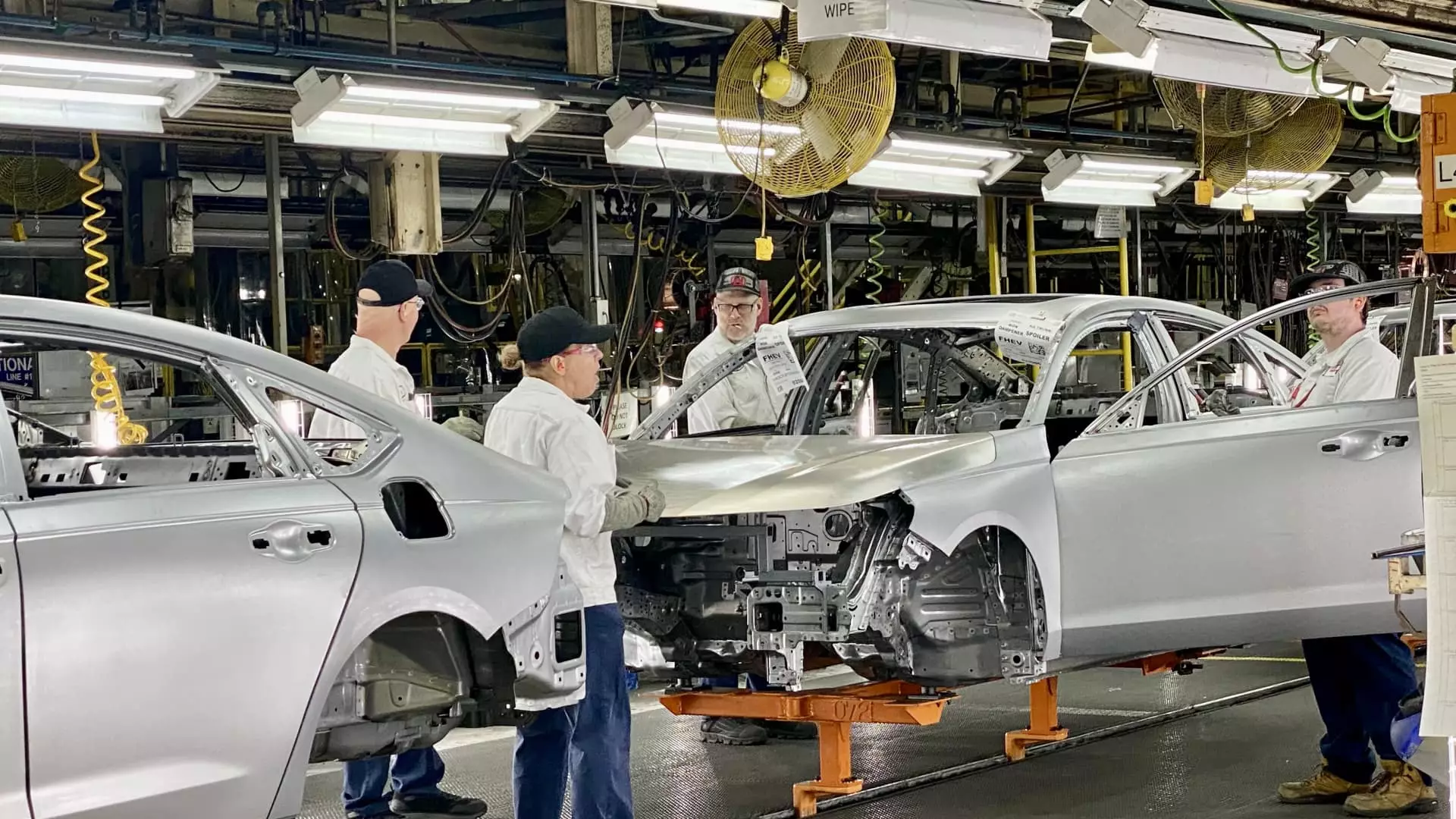In an era characterized by rapid technological progress and the urgent need for sustainable practices, Honda Motor Company is making a significant shift in its manufacturing strategy. The Japanese automaker, known for its enduring presence in the automotive industry, is channeling over $1 billion into its operations in Ohio. This unprecedented investment marks a pivotal shift in Honda’s approach to vehicle production, particularly concerning electric vehicles (EVs). By choosing Ohio as the site for its advanced manufacturing hub, Honda breaks from its historical reliance on Japan as the starting point for major innovations.
Honda’s latest initiative in Ohio includes the introduction of six innovative “giga presses,” a technology popularized by Tesla that promises to transform how automotive components are produced. These machines allow for larger components, particularly battery cases, to be cast in a single mold, significantly reducing production complexity and costs. The sophistication of this manufacturing equipment reflects Honda’s strategic pivot toward electric mobility, emphasizing a more efficient production process that aligns with the growing demand for EVs.
Alongside the giga presses, Honda is establishing a “cell” manufacturing system that facilitates the assembly of battery packs in a more flexible, efficient manner. The decision to implement a system where battery assembly occurs parallel to the main vehicle assembly line represents a fundamental change in production philosophy. This method mitigates potential disruptions and bottlenecks, allowing the production of EVs to proceed smoothly while integrating traditional vehicular manufacturing processes.
The ambitious Ohio project positions itself as a central node in Honda’s future blueprint for electric vehicle manufacturing. Anchored in the Marysville Auto Plant, the endeavor is not merely about adaptation but rather about pioneering new standards for electric vehicle production. As Honda navigates this transition, the facility is slated to produce a diverse array of vehicles, including traditional combustion engines, hybrids, and fully electric models from the same assembly line. This flexibility is vital in meeting varying consumer demands and evolving market trends.
Interestingly, the decision to invest heavily in Ohio, rather than Japan, underscores a significant shift in Honda’s global strategy. Traditionally, Japanese manufacturers would innovate at home before expanding those ideas internationally. However, Honda, through its Ohio investments, is striving to create an EV production model that not only serves the U.S. market but sets a worldwide standard. As Mike Fischer, Honda’s North American lead for battery-electric vehicle projects, emphasized, this initiative is expected to become the benchmark for the company’s global operations.
This revitalization of Honda’s manufacturing capabilities comes at a crucial time. The automotive industry grapples with increasing pressure to adapt to environmental regulations and consumer preferences that demand sustainable vehicles. While Honda has historically lagged behind some competitors in the EV arena, its recent actions suggest a newfound commitment to becoming a leader in electric mobility. The launch of all-electric models such as the Acura RSX and the formation of a joint venture with LG Energy Solutions for battery production represent significant strides towards reaching Honda’s ambitious sustainability goals.
Moreover, Honda is setting its sights on producing zero-emissions vehicles exclusively by 2040, marking a bold declaration of intent in a competitive landscape where many other manufacturers have faltered in their sustainability commitments. Such a clear objective indicates Honda’s determination to not just meet regulatory standards but to lead the charge toward a greener future in mobility.
In conjunction with the shift toward electric vehicles, Honda is also implementing processes designed to reduce emissions and waste across its manufacturing footprint. The use of recyclable structural aluminum for battery packs highlights Honda’s focus on resource circulation—a critical aspect of sustainability. This reflects a broader understanding within the automotive industry about environmental responsibility and the necessity of embracing circular economic principles.
Honda’s transformation isn’t merely an operational change; it symbolizes a fundamental rethinking of how an established automotive manufacturer can innovate while also respecting the planet. As Bob Schwyn, senior vice president of Honda Development and Manufacturing of America, proclaimed, this moment is akin to a “second founding” for Honda, one that redefines its legacy in the automotive world.
As Honda embarks on this ambitious journey to redefine its manufacturing processes amidst the growing electrification of vehicles, the implications extend beyond the factory floor. The company’s commitment to creating a robust electric vehicle production model in Ohio represents a critical step toward achieving its environmental goals while adapting to market demands. Embracing innovative technologies, sustainable practices, and a flexible manufacturing approach, Honda is poised to redefine its role in an increasingly competitive and eco-conscious automotive industry. This strategic pivot not only positions Honda for future success but also sets a compelling standard for manufacturing excellence around the globe.

